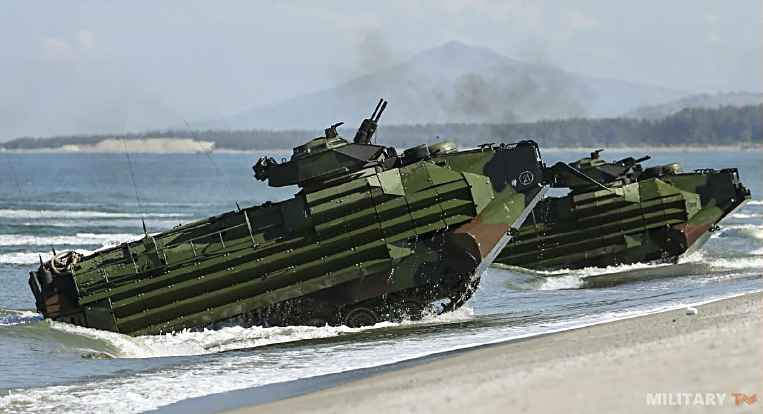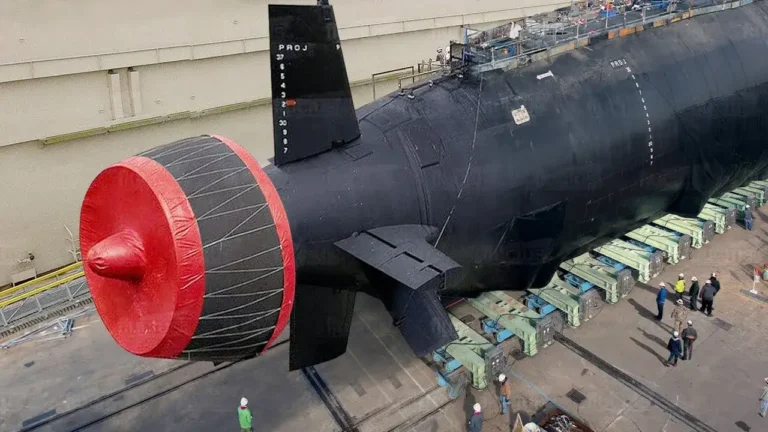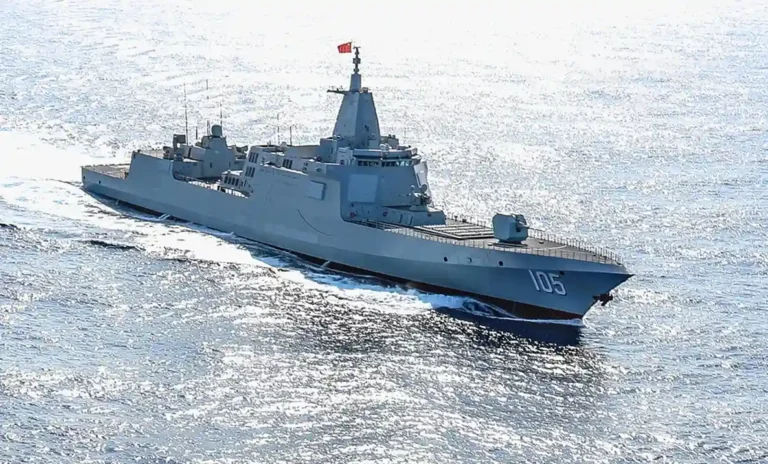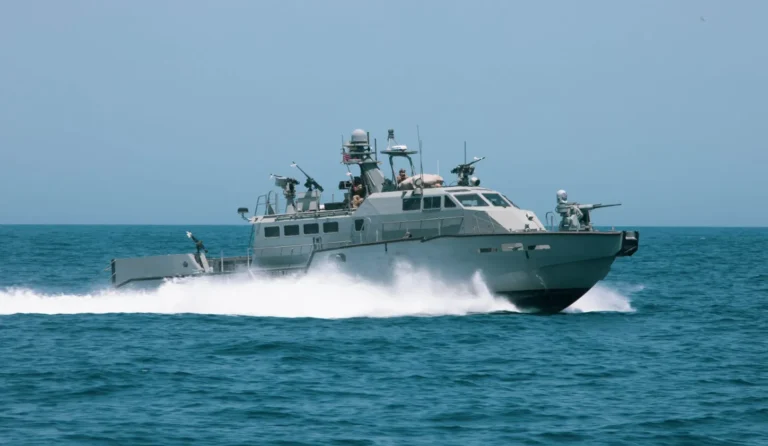Follow Us:
Share
Table of Contents:
AAV7 Amphibious Assault Vehicle
Defense Feeds – The Amphibious Assault Vehicle was formerly known as LVTP7 by the US Marine Corps and other users. It is a big amphibious tracked vehicle that is designed to land troops on sandy beaches.
This vehicle is intended as a replacement for the LVTP5 series in which the production commencing during 1970-1971, this vehicle was then renamed the AAV7 in 1985. It had been produced not only for the US Marines but also for seven export customers, including Argentina, Brazil, Italy, South Korea, Spain, and Thailand.

It was planned that the AAV7A1 amphibious assault vehicle was supposed to be replaced with a next-generation amphibious combat vehicle.
A new Expeditionary Fighting Vehicle was designed as a replacement, however due to funding problems and the ageing AAV7s which are still in use, it was not adopted by the US Marine Corps. It is planned that refurbished and upgraded AAV7s will remain operational until 2035.
Moving on further, let’s take a look at general characteristic of this vehicle. The AAV7 has a crew of three, including commander, gunner, and driver. The capacious troop compartment of the AAV7 can accommodate up to 25 marines or around 4,500 kg of supplies.
The troops are seated on benches, the entry and exit being via a large rear-mounted ramp or roof hatches. In addition, the AAV7 is launched at sea from amphibious assault ships. This armoured vehicle is self-deploying. It is intended for a forced entry into the semi-aquatic areas.
The main task of the vehicles during an amphibious assault is to spearhead a beach and to secure coastline for ongoing troops. Once ashore the AAV7 can operate alongside other armoured vehicles. Its functions include guarding checkpoints, patrolling, and carrying troops and supplies further inland.
This amphibious armoured vehicle has a welded aluminium Armor hull. The reason for this is that an aluminium hull is significantly more rigid than a steel hull. It made possible to reduce the number of reinforcing structures and make the interior more useable.
Armor of the AAV7 provides protection against small arms fire and artillery shell splinters. The AAV7 has been found to be extremely sensitive to landmines and improvised explosive devices in recent military situations.
In terms of design, the AAV7 features a small turret and was originally equipped with a 12.7 mm heavy machine gun. Later it appeared that a single machine gun was insufficient. Thus, a 40 mm automatic grenade launcher was added on improved AAV7A1 model.
The upgraded AAV7 is powered by a new and more powerful engine and is fitted with new waterjets. This upgrade was developed by a Science Applications International Corporation (SAIC) and was first revealed in 2016. KAAV7A1 is a South Korean license-produced version of the AAV7A1.
It also has heavier turrets with 20- or 30 mm cannons which were tested on this amphibious vehicle, however, eventually were not adopted. This vehicle was originally powered by a Detroit Diesel 8V53T turbocharged diesel engine, developing 400 hp and its engine is mounted at the front.
It has a multi-fuel engine, which can run on any grade of petrol, diesel, aviation fuel or kerosene. The latest production model was the AAV7A1, and the earlier models were later brought up to this standard in the late 1970s.
AAV7A1 improvements included a new Cummins diesel engine pack, night vision devices, a new weapon station control system, improved ventilation, and many other detail changes. Further improvements included universal weapon mounting capable of accommodating a 40 mm automatic grenade launcher as well as 12.7 mm machine gun.
Talking about its operational history, twenty U.S. built LVTP-7s were used by Argentina during the 1982 invasion of the Falkland Islands with all of them returning to the Argentine mainland before the war ended.
From 1982 to 1984, LVTP-7s were deployed with U.S. Marines as part of the multi-national peacekeeping force in Beirut, Lebanon. As Marines became increasingly involved in hostilities, several vehicles sustained minor damage from shrapnel and small arms fire.
On October 25th, 1983, the U.S. Marine LVTP-7s conducted a highly successful amphibious landing on the island of Grenada as part of Operation Urgent Fury. It was heavily used in the 1991 Gulf War and Operation Restore Hope.
Moreover, after the 2003 invasion of Iraq, the AAV-7A1s were criticized for providing poor protection for the crew and passengers compared to other vehicles, such as the M2 Bradley. Eight were disabled or destroyed during the Battle of Nasiriyah, where they faced RPG, mortar, tank, and artillery fire.
Also, on August 3rd, 2005, 14 U.S. Marines and their Iraqi interpreter were killed when their AAV struck a roadside bomb in the city of Haditha in the Euphrates River valley in western Iraq.
Another case took place when eight U.S. Marines and one U.S. Navy sailor died on July 30th, 2020, when their AAV sank in the Pacific Ocean off the coast of San Clemente Island, California, during a training exercise, ahead of an upcoming deployment.
As a result of the incident, on December 15th, 2021, the U.S. Marine Corps announced that it has banned its fleet of amphibious armoured personnel carriers from maritime operations except in emergencies.
Share
Defense Feeds
Defense Feeds is publication focusing on informing, engaging, and empowering the world by providing accurate information from defense technology.
Powered by Defense Feeds © 2025 – All rights reserved.




